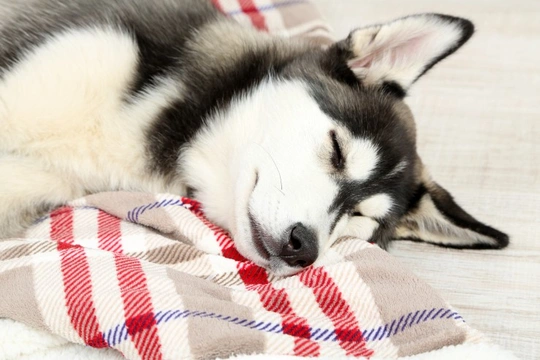
Canine sleep disorders explained
Insomnia, feeling tired all the time and a wide range of other problems with getting to sleep, staying asleep or feeling as if you are never getting enough sleep may be things that we generally think of as uniquely human problems, but this is not the case! Dogs (and other mammals) can suffer from a range of sleep disorders as well, and while they are not as common in dogs as they are in people, they are also very under-diagnosed, as many dog owners do not even realise that there might be something amiss.
It can be hard to work out how much your dog actually sleeps and how much sleep they need, because dogs tend to nap and snooze throughout the day, as well as generally sleeping or at least settling down quietly overnight.
However, if your dog simply seems to never sleep, or sleeps more than appears to be normal, there may be something amiss-and getting to the root of the problem can help to resolve it.
In this article, we will look at the four most common canine sleep disorders, how to identify them and what can be done about them. Read on to learn more.
Common issues that can be mistaken for sleep disorders
While sleep disorders in dogs largely go underdiagnosed, when attempting to get to the root of any problem, it is important to make sure that the problem actually exists first!
For instance, if your dog appears to be absolutely full of energy at all times and reluctant or unable to sleep, they may simply be a fit dog from a very high energy breed, like the Siberian husky, who is not getting enough exercise and having their need for mental and physical stimulation met.
At the other end of the scale, if your dog seems to sleep all the time and is reluctant to do very much, they may simply be very unfit or overweight, or suffering from a health condition such as thyroid anomalies that can cause sleep-related symptoms, but that are not actually caused by sleep disorders.
Next, we will look at the four main categories of sleep disorders in dogs.
Sleep apnoea
Sleep apnoea is something that most people have a basic understanding of, because it is a reasonably common sleep complaint among humans.
Sleep apnoea is a condition that essentially means that the person (or dog) in question stops breathing when they reach a certain stage of sleep, which causes them to wake up or regain consciousness just enough to restart their breathing, before falling asleep again. This leads to broken sleep throughout the night, which of course means that one is tired during the day and cannot understand why.
People with sleep apnoea do not always know that there is a problem, unless their doctors investigate it.
Sleep apnoea is more common in people who are overweight, in which case, losing weight can help; but some people need to use a breathing machine at night to keep air circulating through their body, allowing them to sleep normally.
In dogs, brachycephalic breeds that often have breathing issues are most prone to suffering from it, particularly if they are overweight. The solution for dogs is generally weight loss, or if the issue is caused by the dog’s conformation, an operation to allow them to breathe freely when asleep.
Narcolepsy
Narcolepsy is a condition that leads to the affected dog falling asleep with no warning at any given point-and can occur when they are right in the middle of something. This in turn means that the dog’s sleep at night may be disrupted too, leading to a general issue with staying awake and staying asleep at the necessary times.
It is important to get your vet to make a formal diagnosis if you suspect narcolepsy, as the short, unexpected periods of sleep that it causes are a common symptom with other problems such as epilepsy.
Insomnia
Insomnia is described as a problem with either getting to sleep, staying asleep or both, and for many people this problem can be highly debilitating and greatly interfere with their everyday lives. The causes for the condition in people are not fully understood and there is no accepted method of resolving it; but in dogs, insomnia often comes in old age, and is connected to the dog’s brain aging and bodily changes.
Talk to your vet about ways in which you can help to support your dog in old age, and some of the various supplements and medications that can help to support the mental acuity of the older dog.
REM and limb disorders
REM is the dreaming part of sleep, when the eyes move rapidly behind closed limbs as they track the aths of the dreams.
Generally, REM sleep comes accompanied by a light bodily paralysis that keeps us from acting our our dreams; but this paralysis is not always complete, as you will no doubt be aware if you have ever seen your dog lying on their backs fast asleep, frantically pedalling their legs in mid-air!
In severe cases, REM and limb disorders may lead to your dog sleepwalking or otherwise acting out their dreams, which is why when they awake, they may not be physically very well rested.
Again, your vet should be able to help, so if you think there is an issue, monitor it and keep notes, and talk to your vet about potential solutions.



